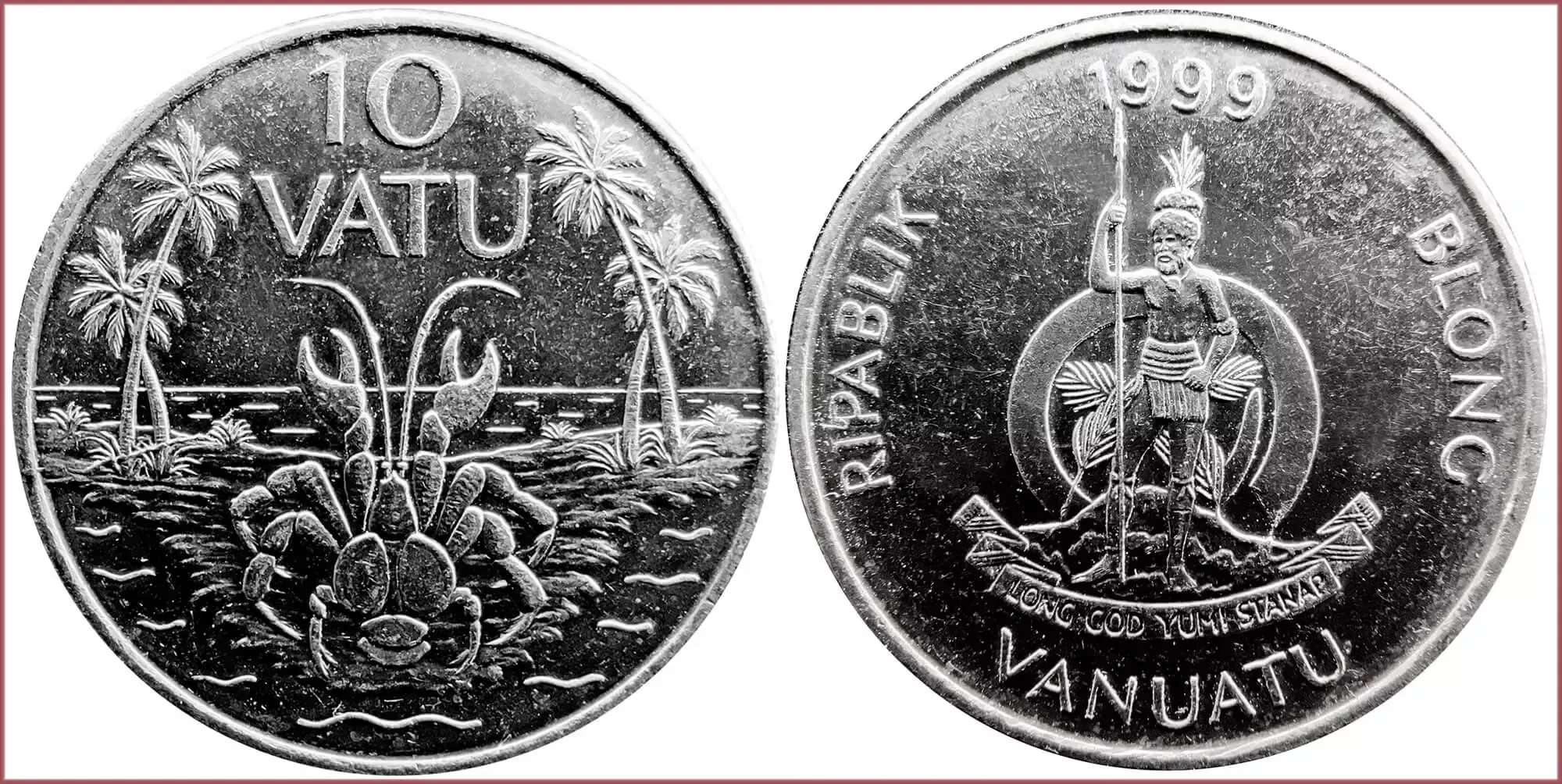VATU: COIN OF VANUATU
10 vatu, 1999: Republic of Vanuatu
Vanuatu — island country in Melanesia, located in the South Pacific Ocean.
10 VATU.
Coconut crab (Birgus latro) on an island among coconut trees — largest terrestrial arthropod and even terrestrial invertebrate in the world.
RIPABLIK BLONG VANUATU: Republic of Vanuatu (by Bislama — an English-based creole language and one of the official languages of Vanuatu).
Coat of arms of Vanuatu (actually — national emblem of Vanuatu): Melanesian warrior holding the spear standing before the mountain superimposed on the boar's tusk encircling two crossed namele fern fronds and the golden scroll on the bottom with the National Motto LONG GOD YUMI STANAP (local analogue of the official motto of the USA in the Bislama language).
Royal Mint (Llantrisant, United Kingdom).
- Copper-nickel: 24 mm - 6.03 g
- Reference price: 0.9$
COIN VATU — WHERE & WHEN (coins catalog: by names & emitents)
- REPUBLIC OF VANUATU (1983-...): vatu
VATU as coin name.
Vatu — coin and national currency of Vanuatu state (until 1980 — the New Hebrides), which occupies the islands of the archipelago in the Pacific Ocean.
It is the only currency in the world that does not have small units (even formally). That is, 1 vatu is the smallest unit of measurement of Vanuatu's national money since 1983 (before that, New Hebrides francs and Australian dollars were in circulation).
The first in the history of Vanuatu its own (non-colonial) coins date back to 1983.
Vatu are in circulation in the form of coins with denominations of 1, 2, 5, 10, 20, 50 and 100 (for convenience, local residents call 100 vatu as a dollar). In addition, the issue of jubilee/commemorative coins (including gold) is practiced.
The issue of the vatu is managed by the Reserve Bank of Vanuatu (the actual minting of coins to order is done by the Royal Mint of United Kingdom, while the New Hebrides francs were made in France).
The name of the currency comes from the term "batu", which means "stone" in the local language. Stones are traditional Melanesian currency ("stone money").
By the way, the ancient money substitutes of neighboring Micronesia are interesting. They are known as "Rai stones".
Rai stones — large stone discs made of limestone with a hole in the middle. They can be found on the Yap Islands, Micronesia. They were used as an object of exchange and trade and, to some extent, served as money. These stones were mined on the islands of Palau, from where they were delivered by canoe or raft.

